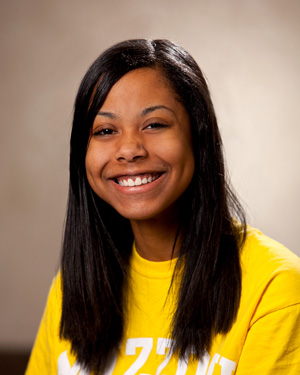A Transformative Journey with Cultural Leadership – Melinda Oliver
Published July 13, 2011
I’ve always been aware of my identity as a young, African-American girl growing up in St. Louis. I was taught my place and the guidelines of this city before I even began my first day of middle school. I knew what typically was, and almost undeniably still is, the image of a girl like me — black, privately educated, Christian and also a resident of the inner city.
Everyone including myself knew I had won the “life lottery” — I was one of the few “lucky” ones of my kind who escaped the misfortune my people suffered. And when I say “kind,” yes, I mean race or color or ethnicity or whatever makes you feel more comfortable.
My identity was stamped on my forehead and as I boarded the plane to leave for the 20-day trip with my Cultural Leadership class, I didn’t plan on it changing. I was very content with who I was and really had no desire to look outside of my sheltered bubble to see the injustice in the world. I had no intention of ever seeing how different peoples identities, such as, socioeconomic background, race, religion, gender or sexual orientation, hurt or hindered them outside of my perfect world.
Sure, I knew about the Civil Rights Movement, where blacks were denied basic rights like voting, equal education and access to public places simply because of their skin color. Of course, I had learned about the Holocaust and the mass murder inflicted on six million Jews solely because of their religious beliefs. Yes, I knew, and it was sad, but it was not me. It did not affect me personally in the year 2011 in my pampered life.
That was until we visited the Holocaust Museum in Washington, D.C. and we went to Whitwell, Tenn. where middle school students in this small town collected a paper clip for every life lost in the Holocaust. Paper clips came from all over the world, and the students stopped counting at 30 million! What to do with all those paper clips? They got a German railcar the Nazi’s used to transport countless Jews to camps and put 11 million in it to memorialize the lives the victims lived prior to their deaths. (The other 19 million are in safekeeping in storage in Whitwell. Every one represents a life so they cannot and will not get rid of them.)
I can’t believe that Jewish people in Europe were killed ruthlessly and systematically. Why? The Nazi regime didn’t like their ‘identities.’ They felt the Jews were less than them — cockroaches, at best.
This identity issue hit home when we met Georgia Representative John Lewis in his office on Capitol Hill. He explained that he was beaten to a bloody pulp many times during the Civil Rights Movement, including when he marched across the Edmund Pettus Bridge on Bloody Sunday in March, 1965. The reasoning for this brutal attack? The white police didn’t like his identity. He wasn’t a full man. He didn’t get or deserve the same rights as whites.
My mind raced so many times during our transformational journey — anger boiling inside me. How could people just forget the humanity of their fellow man like this? How could this have happened in history? How could I feel that all these incidents wee not part of my identity? How could I work to make sure my identity, life, and name echoed the words of great peacemakers and screamed out the ideals of those who fought tirelessly to end the crimes against humanity that occurred and assure these tragedies were never forgotten?
In New York, we met with Reverend Al Sharpton at the National Action Network headquarters and he explained to us what it meant to live in your “dash.” The dash is the hyphen between your date of birth and your date of death on your tombstone. Everything I learned on the Cultural Leadership summer trip has to do with how I will lead my life, my “dash.” I think a lot now about my dash and wonder: What would people say about how I lived my dash? What would my epitaph say I did?
There’s this Jewish phrase that is repeated over and over again to us by Cultural Leadership staff and the countless people, including rabbis, we met on the trip: “Tikkun olam” which simply means to ‘heal the world.’ I want my legacy and identity to be just that. A healer of this world — someone who helped Martin Luther King Jr.’s hallowed words become reality and help create a world where people will be judged on the “content of their character and not on the color of their skin.”
That’s how I choose to identify myself from this day forward.
Melinda Oliver is a member of Cultural Leadership’s Class Seven and attends Westminster Christian Academy.














